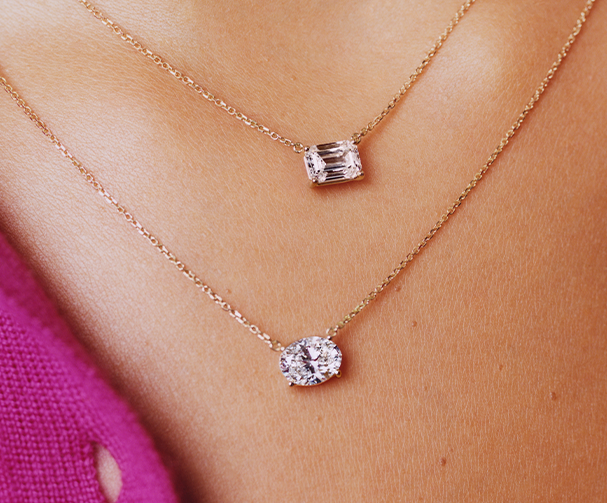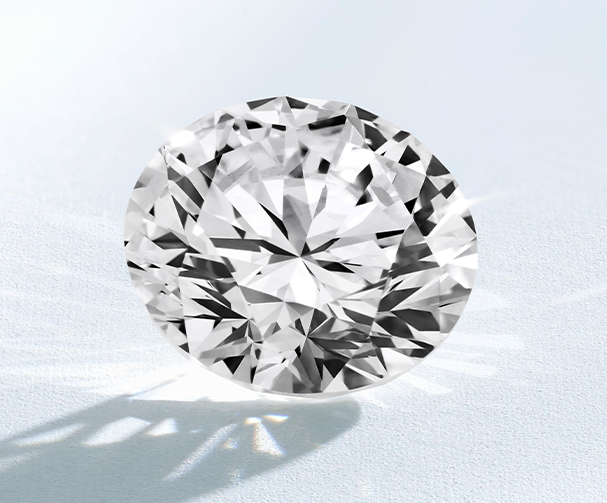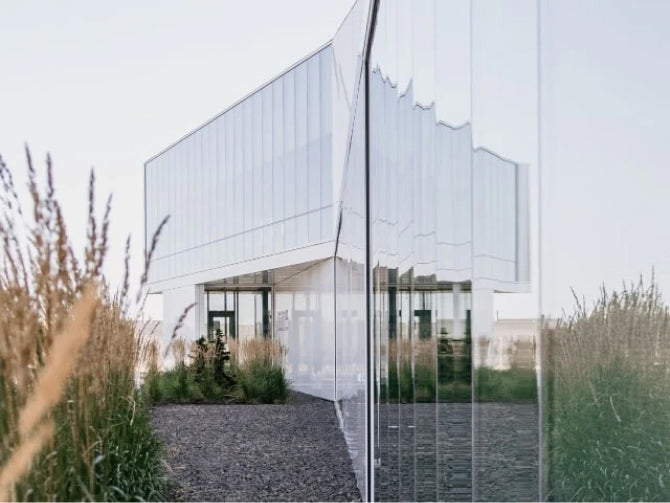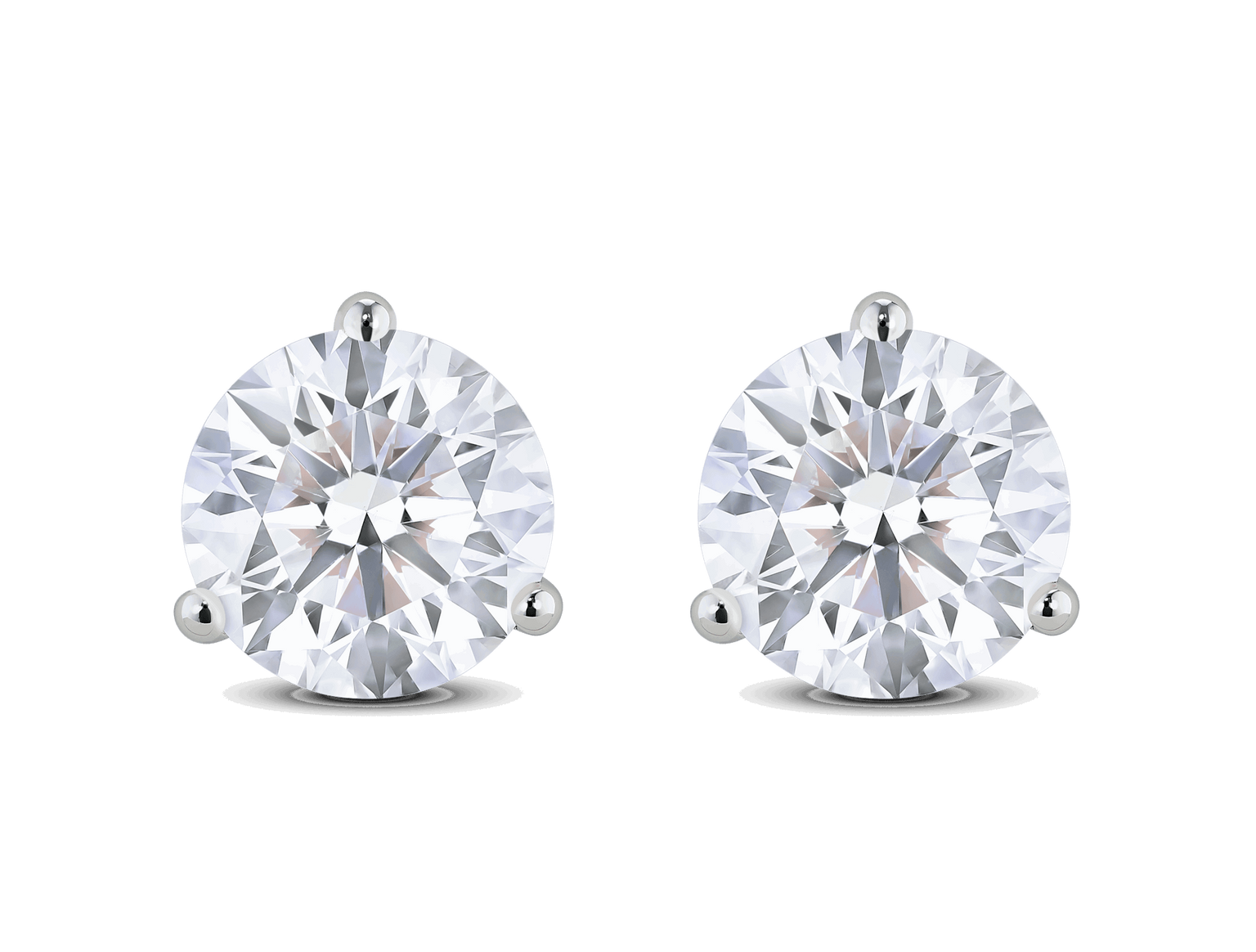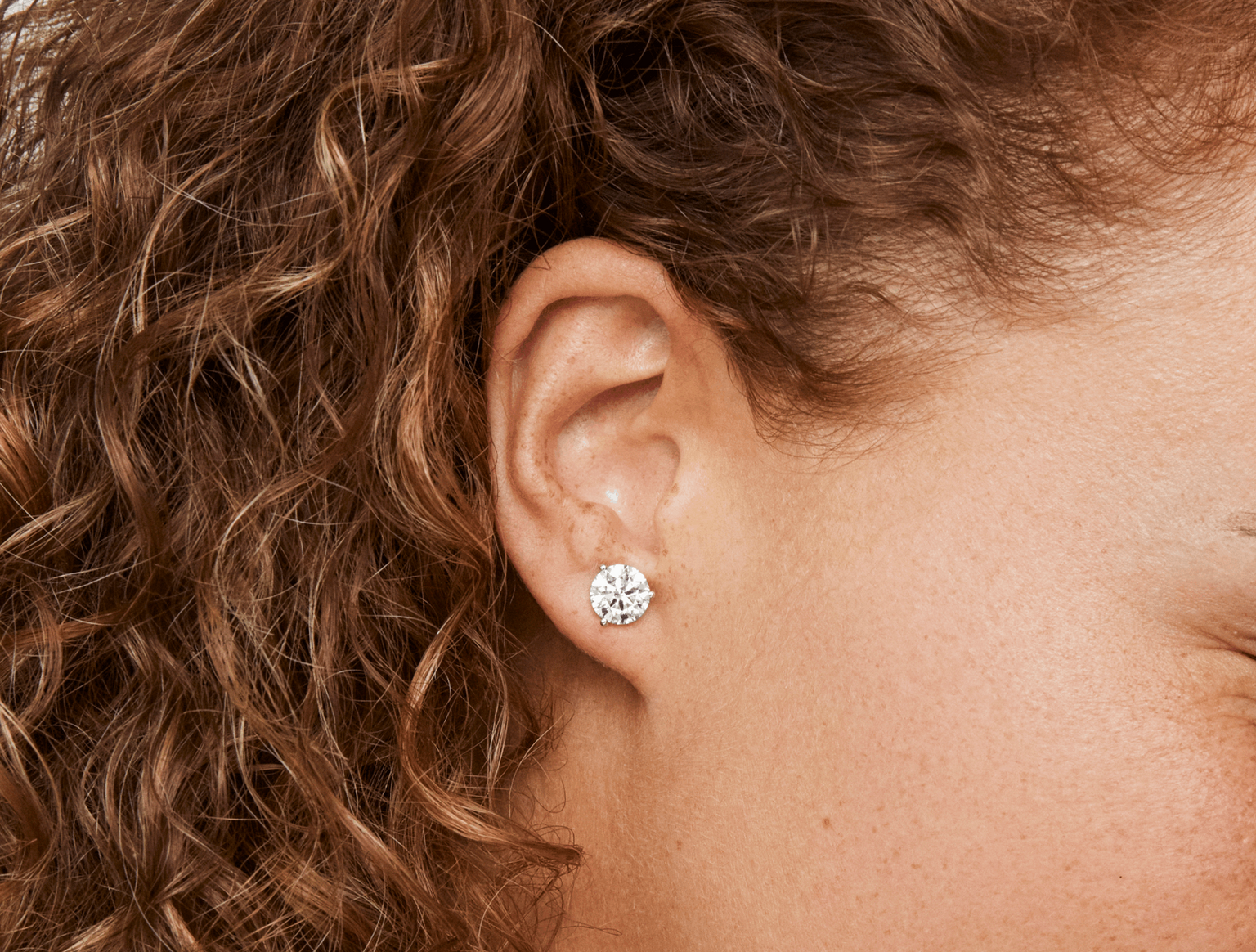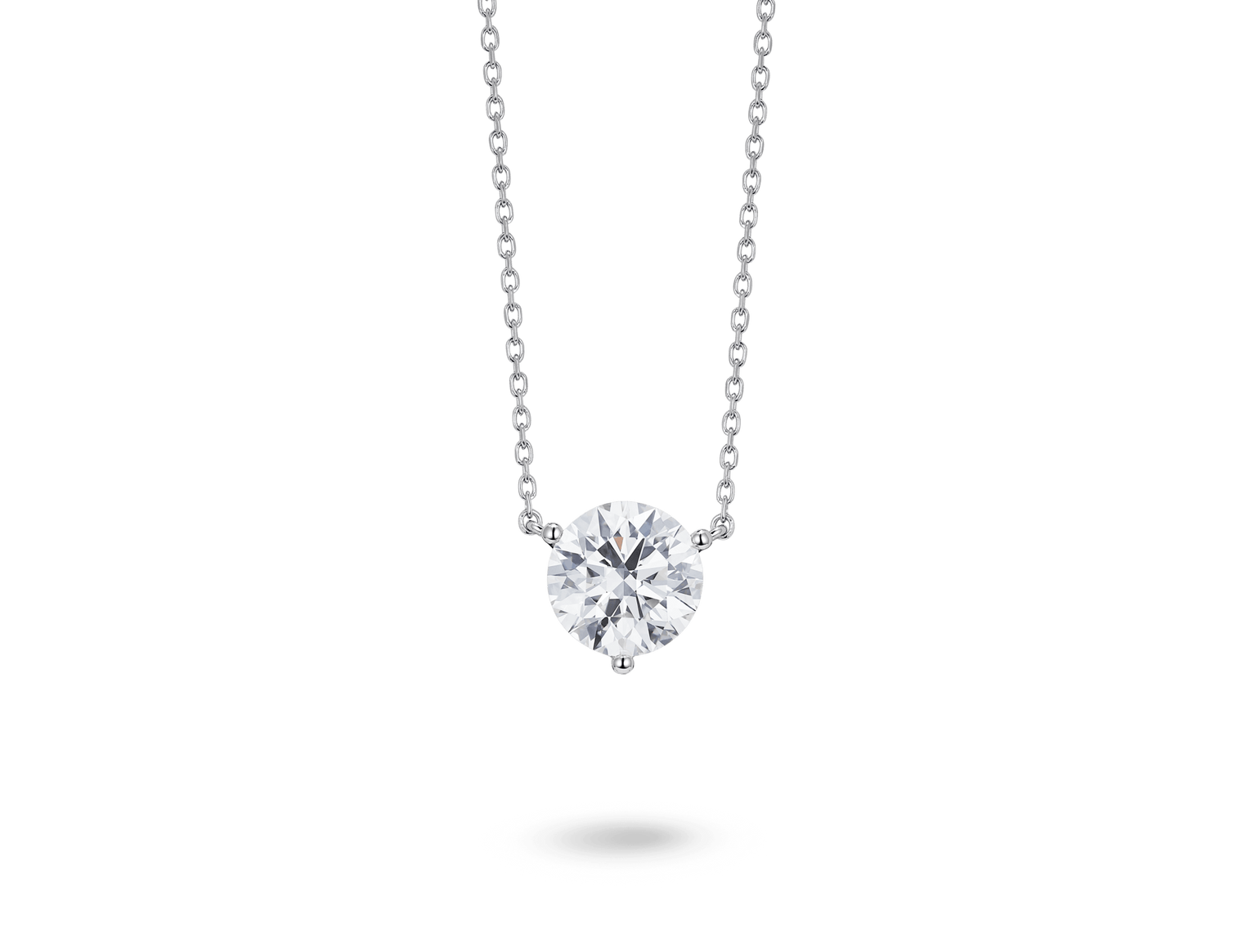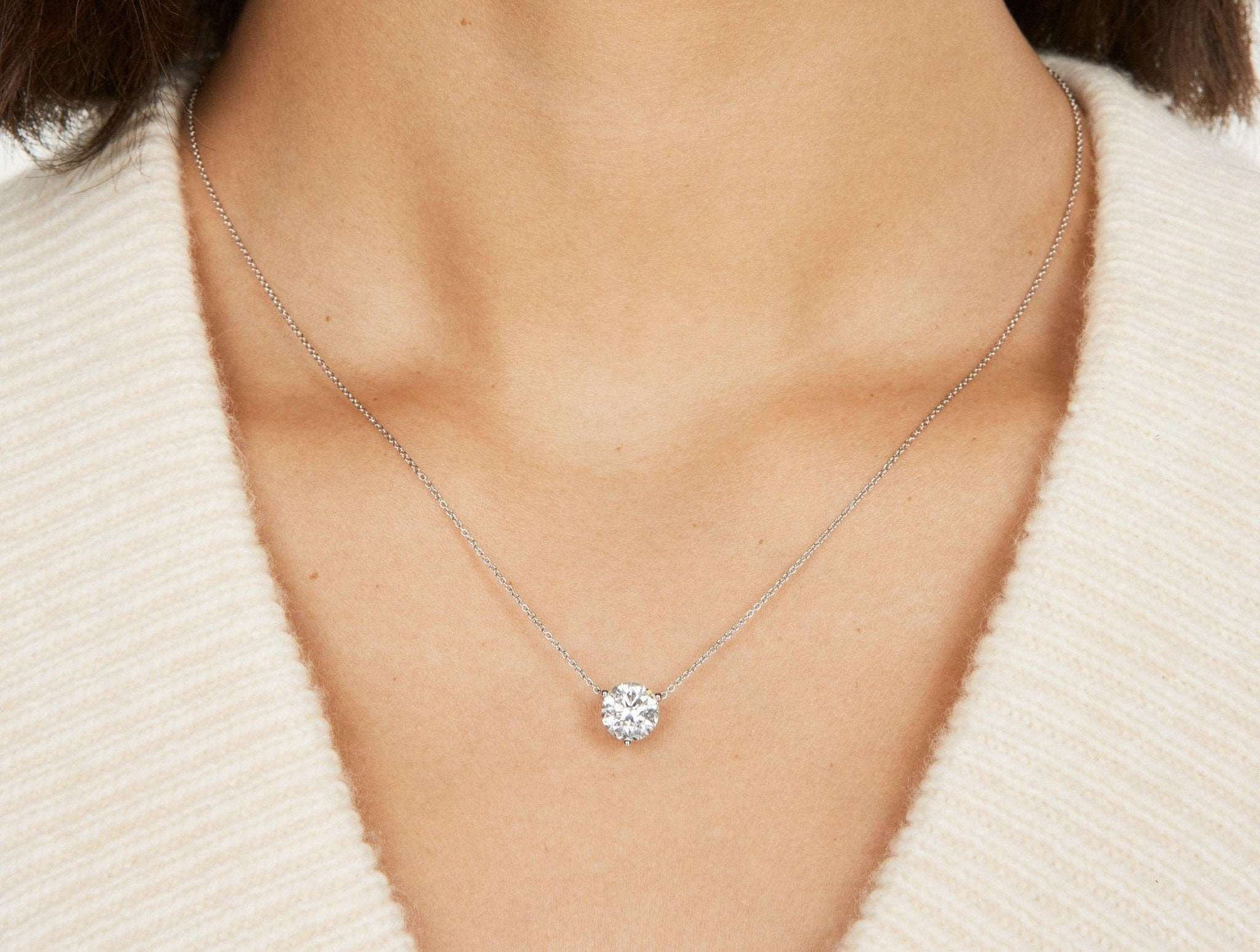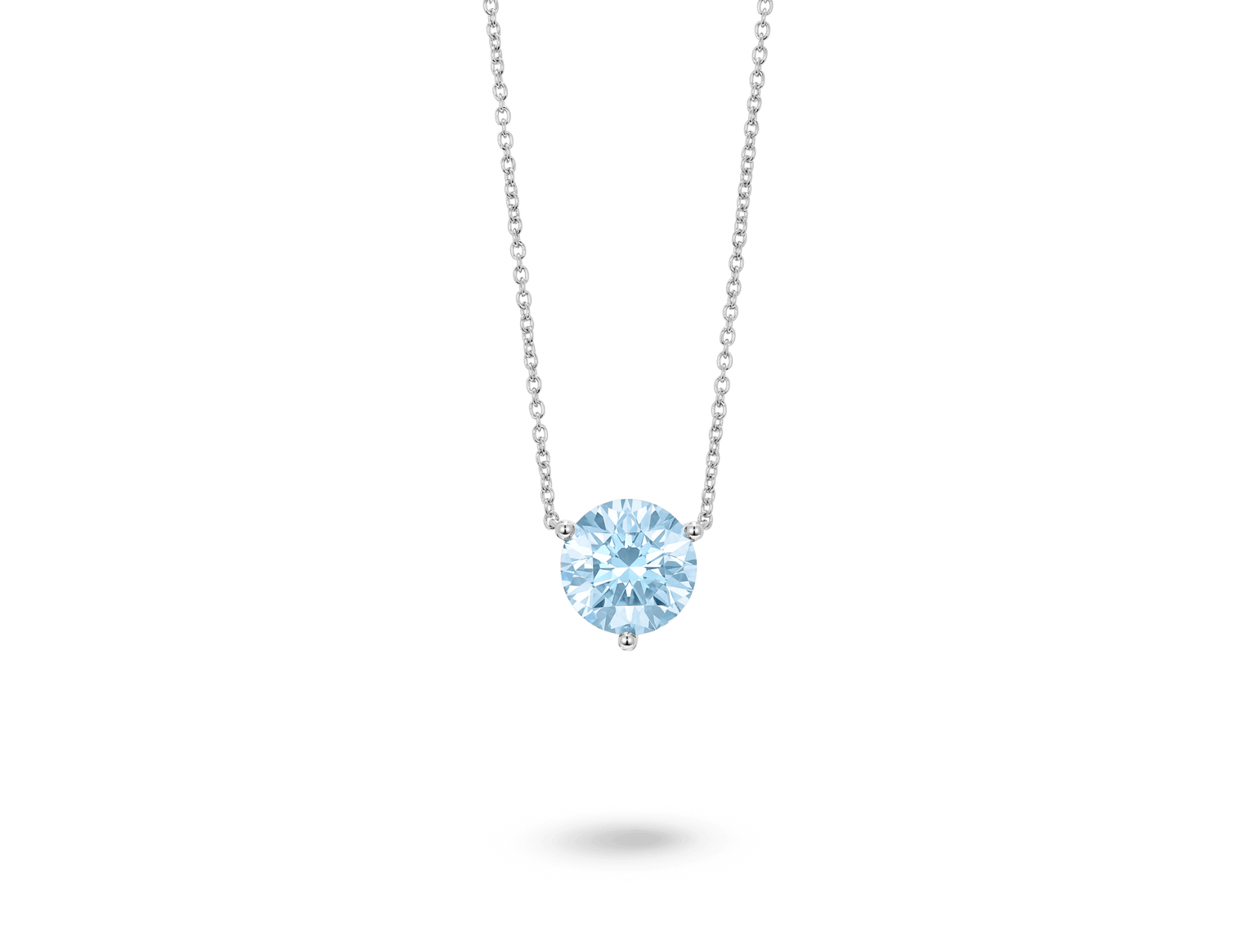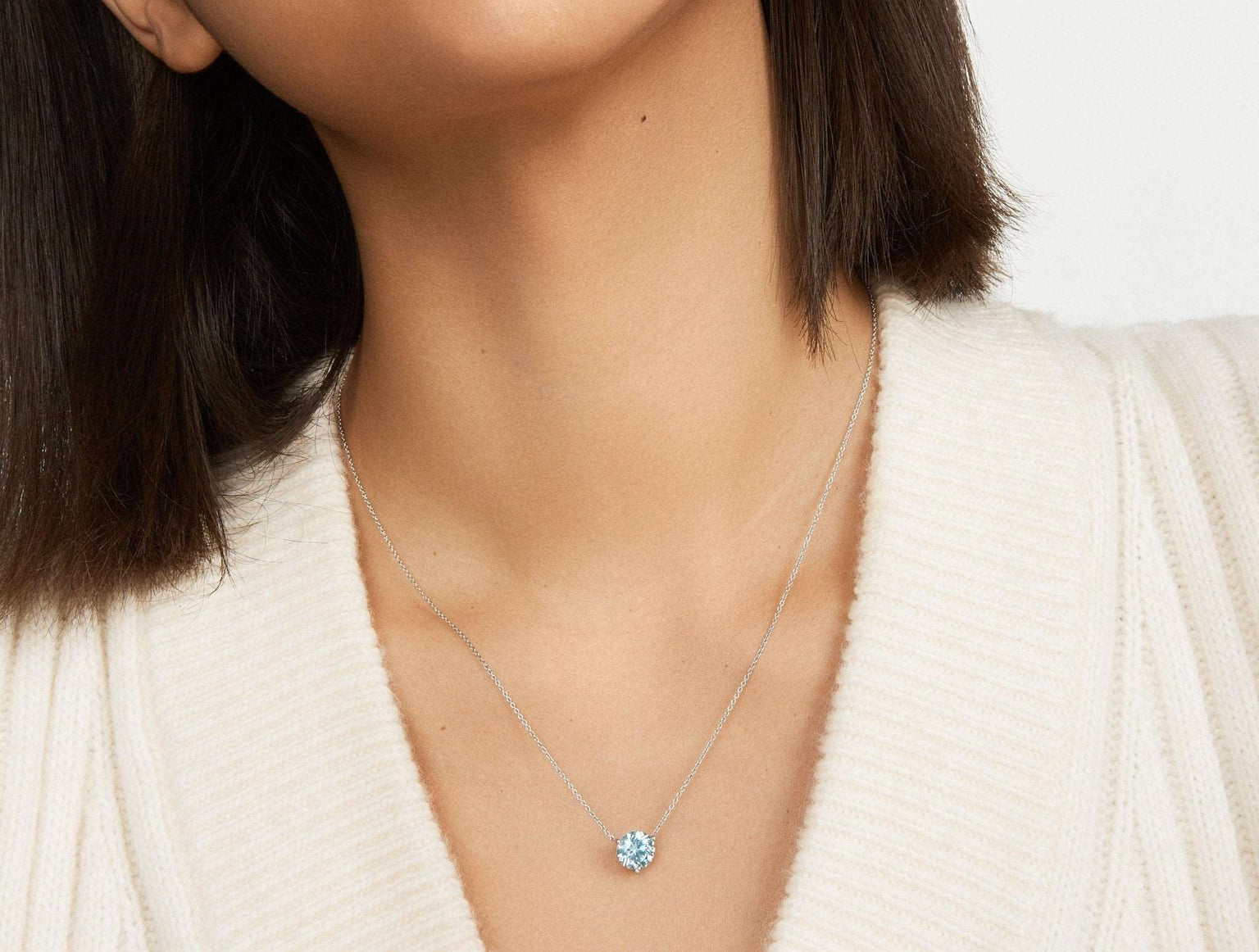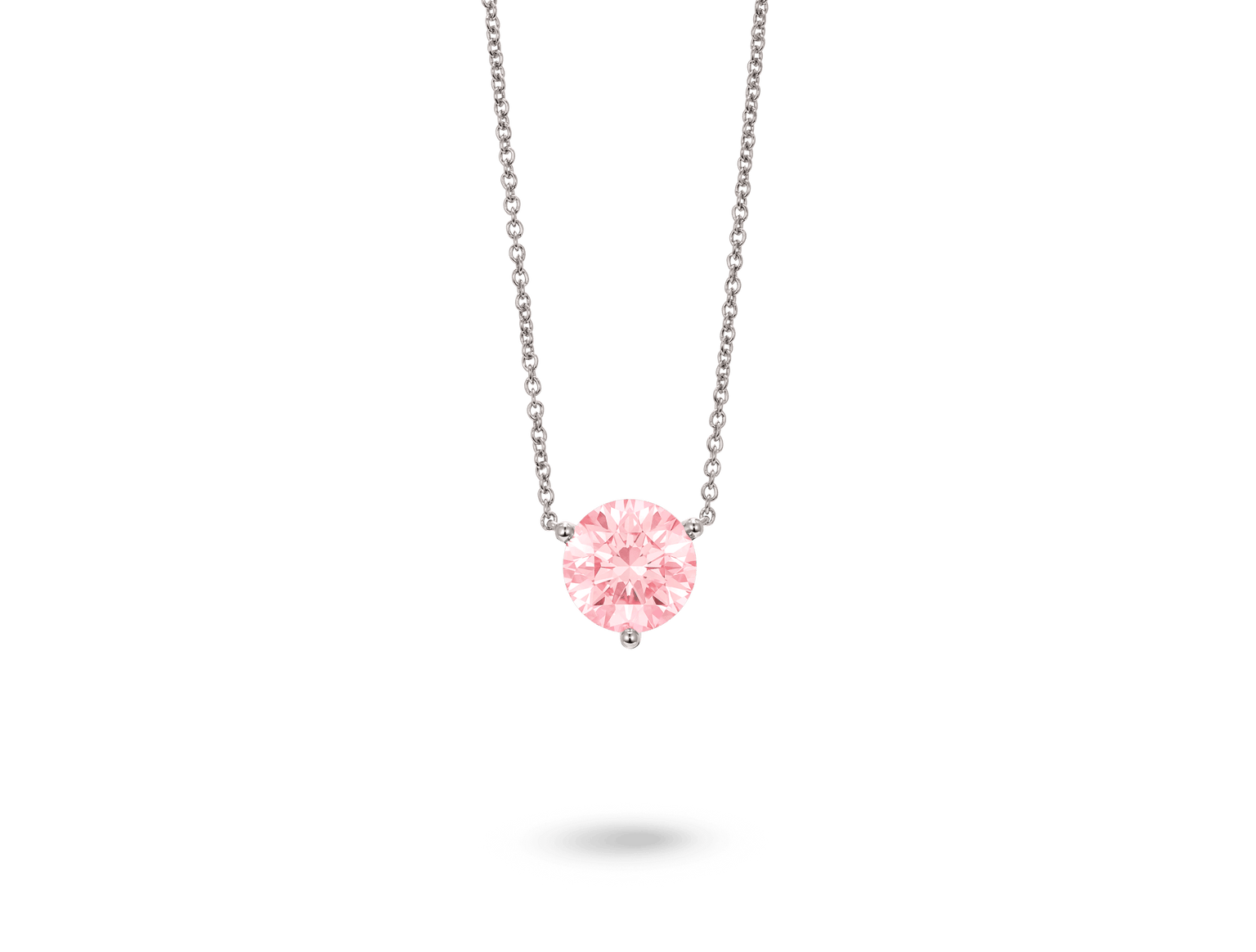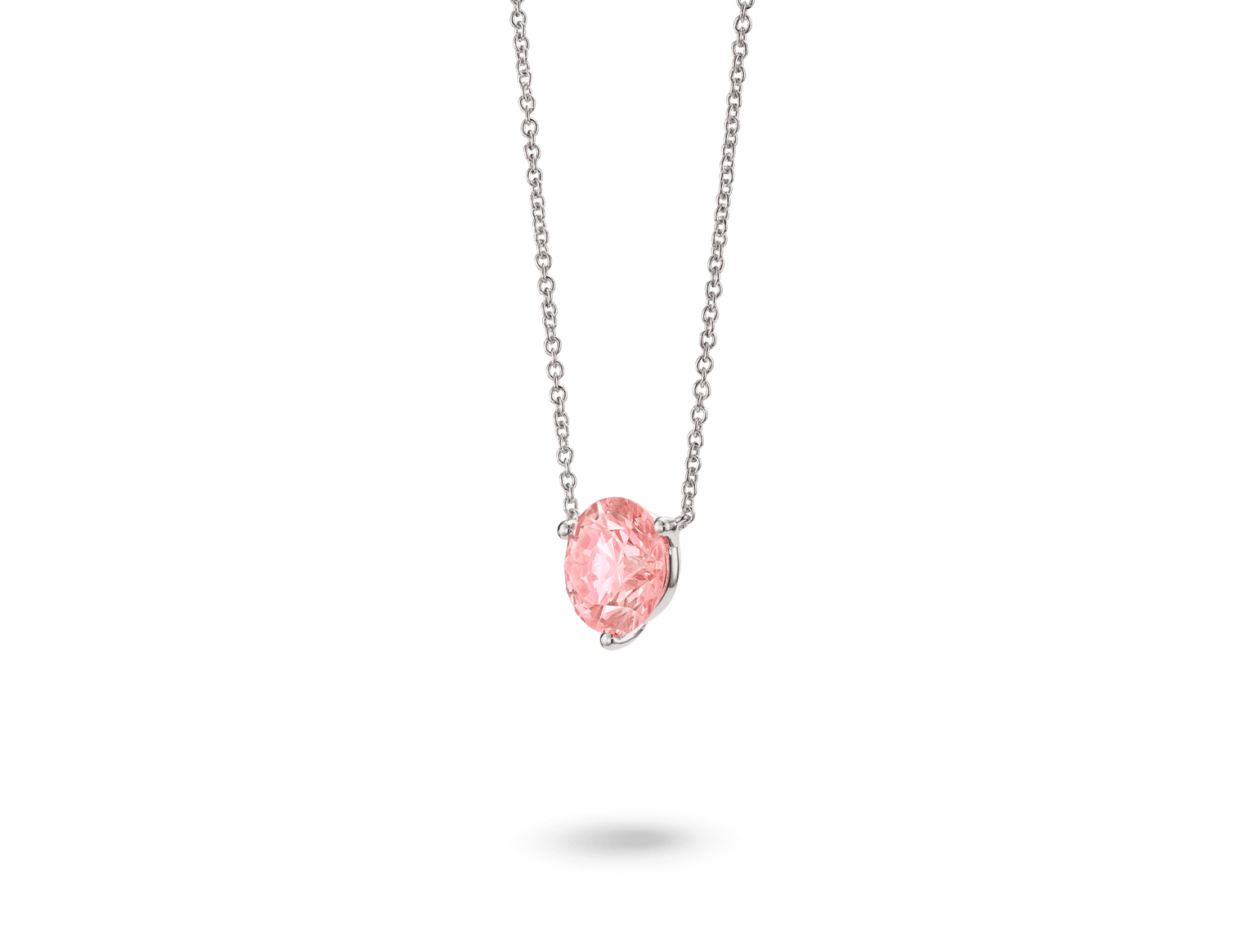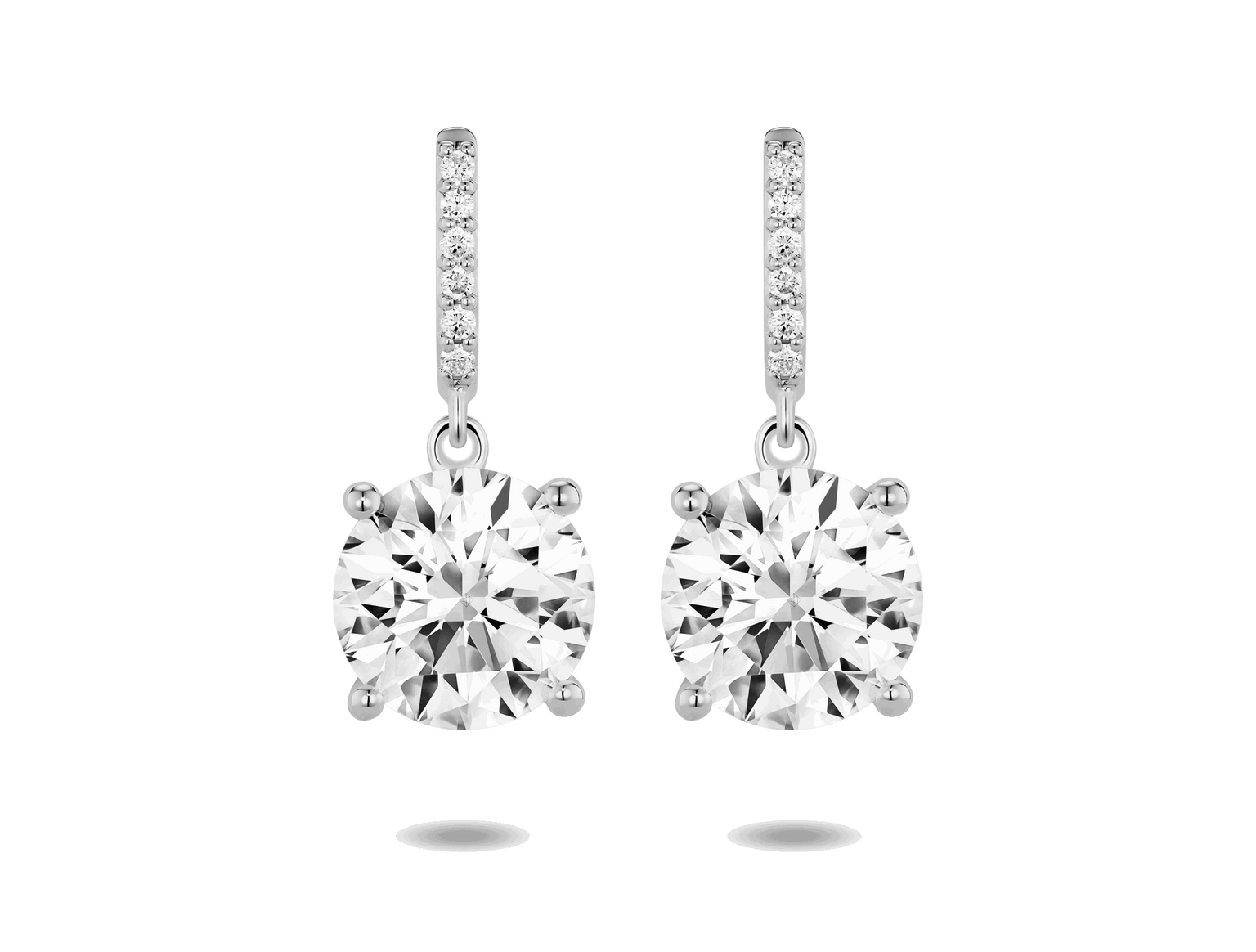Popular with celebrities and royals alike (or both, if you’re Meghan Markle), the cushion cut is one of the most on-trend diamond shapes on the market today. With unique faceting patterns, a variety of shapes, and light-reflecting properties that vary by diamond, the cushion cut really is a one-of-a-kind option. At lightbox, our lab-grown cushion cuts are modern and ultra-sparkly. Once you learn more about the history of the cushion cut, what makes it special, and its standout optical properties, chances are you’ll find the perfect cushion cut for your jewelry box in our collection of lab-grown stones.
What is a cushion cut diamond?
Highly sought after because the stone’s shape offers an antique yet modern feel, the cushion cut is often considered one of the more contemporary cuts. Some cushion cuts can run the gamut from nearly square to nearly round. For most, a classic cushion cut diamond is the perfect marriage between a square diamond and a round brilliant cut diamond, resulting in a beautiful square cut with rounded corners and edges.
Sometimes, you’ll hear of a cushion cut referred to as a “pillow cut” diamond; this nickname comes from the pillow-like shape resulting from the rounding of the edges.
Technically speaking, cushions typically have the pavilion (the portion of the diamond that sits below the girdle) of a brilliant cut and a large table, which is the top, flat part of the diamond, similar to an emerald cut diamond.
One of the most appealing parts of a cushion cut diamond is its inherent uniqueness, with each stone having its own distinct personality. This is because small changes in the length and width ratio can change the outward appearance of the diamond. For example, some are more square than others, which might be almost rectangular, while others are chunkier in appearance. While one is not necessarily better than another, these small yet impactful variances mean you and find a cushion cut diamond that is perfect for you.
The history of a cushion cut diamond
The cushion cut is one of the oldest diamond shapes and cuts available. Historically, what you know of as the cushion cut today was more commonly referred to as an “old mine cut”. (if you’re keeping track, yep; that’s a second nickname.) The name “old mine cut,” however, dates back to the 1700s when miners in Brazil would cut diamonds in shapes and sizes that were advantageous to the rough’s original silhouette. Today, growers, especially when it comes to lab-grown diamonds, are more tactical in their approach and can grow diamonds for specific cuts and sizes, resulting in less wasted material and a lower price for the consumer. When natural diamond mines were discovered in South Africa, diamonds from brazil became known as old mine diamonds.
Old mine cuts don’t mirror the cushion cuts you see at lightbox; they have a higher top, called a crown, and the bottom, known as a pavilion, is deeper than you find in today’s market. The biggest reason for these changes is technological advances, which also help improve the stone’s faceting and overall sparkle.
Nowadays, you’ll find eye-popping cushion cut diamonds on the fingers of it-girls like Kim Kardashian, Meghan Markle, and Gabrielle Union, to name a few.
How to choose a cushion cut diamond
Finding the right mix of quality, cut, and size to match your budget is essential to discovering a piece of jewelry you’ll reach for again and again. To simplify the process, the universal standard for grading diamonds and gemstones is the 4C’s, which stand for cut, clarity, color, and carat. Here’s how the 4C’s work for cushion cut diamond rings, earrings, necklaces, and more.
Clarity
The cut of a diamond determines its brilliance, or how much its facets interact with light and sparkle. When looking at a cushion cut diamond, clarity is one of the biggest factors. As you eye a cushion cut lab-grown diamond, try not to expect the pure sparkle that characterizes a round brilliant or princess cut diamond. Don’t get us wrong, a cushion cut still has an eye-catching sparkle but it’s a bit different from other cuts. Every Lightbox lab-grown diamond has been measured as vs (which stands for very slightly) or better. This means the stone has minor inclusions that are difficult to see at 10x magnification and cannot be seen by the naked eye.
Cut
We already touched on the “old mine cut” that famously defined the shape in the past, but what about today’s cut? When choosing a stone in person, look for the sides and corners of the stone to mirror each other; symmetry plays a large role in the overall look.
Next, it’s important to know there’s more nuance with a cushion cut than there is with other stone cuts. For example, cushions can be created from a range of cutting patterns, which isn’t the case for most other diamond shapes, which are achieved with a singular cutting style.
A “standard cut” or “cushion brilliant” is the OG of cushion cuts and has been around for centuries. (Lightbox offers a cushion brilliant cut.) A common subsect of the cushion-verse is the “cushion modified,” which, to be clear, is still a cushion cut diamond but with an extra row of facets below the girdle.
Another term commonly used with the cutting of cushion cuts is “crushed ice”. This refers to a faceting pattern that, when you look at the diamond from the top down, you’ll see a disco ball-esque look. In that cut, the back facets are blurred by a glittering effect. So. Much. Sparkle.
Color & Carat
Because we are able to offer consistent quality with each lab-grown diamond, our pricing transparently starts at 800 USD per carat or or 1500 USD a carat for our lightbox finest™ stones. Opting for a lightbox lab-grown diamond helps to take the guesswork out of buying cushion cut lab-grown diamonds.
Beautiful in their own right, cushions are known for giving off a more colorful or fiery hue. So, if you’re someone who likes the fiery flashes that you might see in a material like Moissanite, for example, then a cushion cut lab-grown diamond is right for you.
